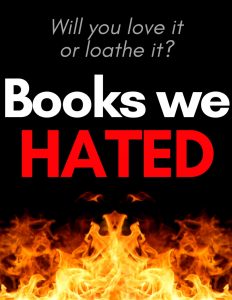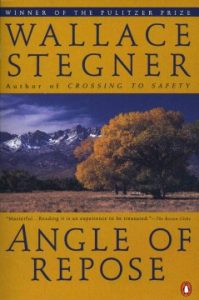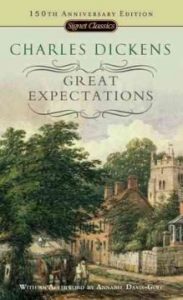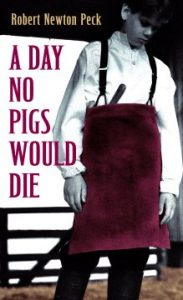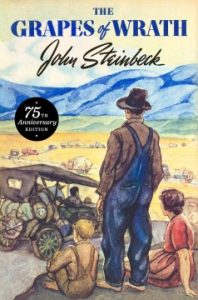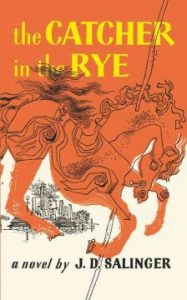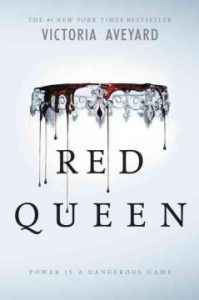Beloved Patrons, have you see the updates to our Library’s website? 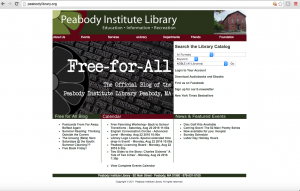
In addition to providing upcoming events and news, take a look at the text box in the lower left-hand side of the screen….
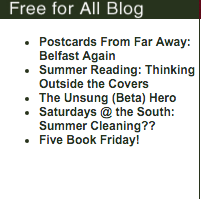
It’s the five most-recent posts from this here Free For All, providing you with up-to-the-minute updates on all the joyful nonsense that goes on here!
We’re going to be working on updating our website even further in the coming weeks, so keep your eyes peeled for lots of good things yet to come, but, for now, a huge thanks to our fantastic Web Site Magician, for all her hard work!
And now…how about some new books?! Here are just a few of the many new tomes that hopped up onto our shelves this week, and are eager to meet you!

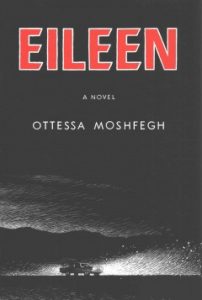 Eileen: This is a new-to-us book, which was released in 2015. However, when Massachusetts’ native Ottessa Moshfegh’s haunting novel has been long-list for the Man Booker Prize, the book was reprinted, and we made sure to get a copy for ourselves. Set in the 1960’s, this novel follows, Eileen Dunlop, outwardly an unremarkable employee at a boys’ prison outside Boston. But at heart, Eileen is a disturbed, desperately lonely young woman who spends her days trying to survive her job, and her evenings trying to clean up after her alcoholic father. But when a bright, beautiful new counsellor comes to the prison, Eileen finds herself pulled into a new, all-consuming friendship–and finds herself willing to do anything to keep that friendship. Anything. The Hitchcock-ian twist in this book, and Moshfegh’s ability to create a thoroughly creepy, yet irresistibly compelling atmosphere has had reviewers around the world raving, including The Guardian, who said “The great power of this book, which won the PEN/Hemingway debut fiction award last month, is that Eileen is never simply a literary gargoyle; she is painfully alive and human, and Ottessa Moshfegh writes her with a bravura wildness that allows flights of expressionistic fantasy to alternate with deadpan matter of factness…As an evocation of physical and psychological squalor, Eileen is original, courageous and masterful.”
Eileen: This is a new-to-us book, which was released in 2015. However, when Massachusetts’ native Ottessa Moshfegh’s haunting novel has been long-list for the Man Booker Prize, the book was reprinted, and we made sure to get a copy for ourselves. Set in the 1960’s, this novel follows, Eileen Dunlop, outwardly an unremarkable employee at a boys’ prison outside Boston. But at heart, Eileen is a disturbed, desperately lonely young woman who spends her days trying to survive her job, and her evenings trying to clean up after her alcoholic father. But when a bright, beautiful new counsellor comes to the prison, Eileen finds herself pulled into a new, all-consuming friendship–and finds herself willing to do anything to keep that friendship. Anything. The Hitchcock-ian twist in this book, and Moshfegh’s ability to create a thoroughly creepy, yet irresistibly compelling atmosphere has had reviewers around the world raving, including The Guardian, who said “The great power of this book, which won the PEN/Hemingway debut fiction award last month, is that Eileen is never simply a literary gargoyle; she is painfully alive and human, and Ottessa Moshfegh writes her with a bravura wildness that allows flights of expressionistic fantasy to alternate with deadpan matter of factness…As an evocation of physical and psychological squalor, Eileen is original, courageous and masterful.”
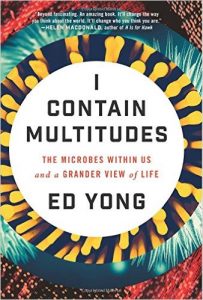 I Contain Multitudes: The Microbes Within Us and a Grander View of Life: For all that anti-bacterial hand stuff has become part of our life, and for all that we hear about the dangers of tiny little organisms we can’t see, Ed Yong’s book argues that microbes are an indispensable part of our lives, protecting us from disease, digesting our food, and, literally, keeping life on earth moving by providing the bonds that bring lifeforms together. In this ‘microbe’s eye view’ of the world, Yong gives us a new way to look at the world around us, and our part in it, in a way that is fascinating, informative, and instantly engaging. The beauty of this book is how it can take something as apparently straight-forward as the microbe and make it sound wondrous. Booklist agrees, cautioning, “Bottom line: don’t hate or fear the microbial world within you. Appreciate its wonders. After all, they are more than half of you.”
I Contain Multitudes: The Microbes Within Us and a Grander View of Life: For all that anti-bacterial hand stuff has become part of our life, and for all that we hear about the dangers of tiny little organisms we can’t see, Ed Yong’s book argues that microbes are an indispensable part of our lives, protecting us from disease, digesting our food, and, literally, keeping life on earth moving by providing the bonds that bring lifeforms together. In this ‘microbe’s eye view’ of the world, Yong gives us a new way to look at the world around us, and our part in it, in a way that is fascinating, informative, and instantly engaging. The beauty of this book is how it can take something as apparently straight-forward as the microbe and make it sound wondrous. Booklist agrees, cautioning, “Bottom line: don’t hate or fear the microbial world within you. Appreciate its wonders. After all, they are more than half of you.”
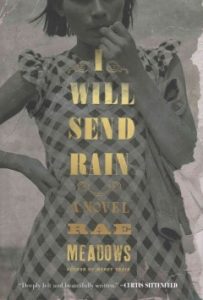 I Will Send Rain: We’ve all seen photos of the Dust Bowl–of desperate-looking women and their barefoot children; we’ve heard the stories of the malnutrition and relentless wind-storms that ruined crops and made the depths of the Great Depression seem all the more hopeless. Rae Meadows’ novel takes us inside those stories, into the world of Annie Bell, whose Oklahoma farm has been ravaged by those storms, and whose family is slowing coming apart at the seams. With her son suffering from dust pneumonia, her daughter looking for anyway out of their current existence, and her husband plagued with dreams of rain, Annie begins to realize that she can no longer live for others; in order to survive, she has to make her own choices. This story is at once deeply personal and wonderfully representative of a time that continues to haunt our collective imagination. Publisher’s Weekly gave this tale a starred review, saying “Meadows’s strength lies in letting her story be guided by the shadow and light of her well-rendered characters…A vibrant, absorbing novel that stays with the reader.”
I Will Send Rain: We’ve all seen photos of the Dust Bowl–of desperate-looking women and their barefoot children; we’ve heard the stories of the malnutrition and relentless wind-storms that ruined crops and made the depths of the Great Depression seem all the more hopeless. Rae Meadows’ novel takes us inside those stories, into the world of Annie Bell, whose Oklahoma farm has been ravaged by those storms, and whose family is slowing coming apart at the seams. With her son suffering from dust pneumonia, her daughter looking for anyway out of their current existence, and her husband plagued with dreams of rain, Annie begins to realize that she can no longer live for others; in order to survive, she has to make her own choices. This story is at once deeply personal and wonderfully representative of a time that continues to haunt our collective imagination. Publisher’s Weekly gave this tale a starred review, saying “Meadows’s strength lies in letting her story be guided by the shadow and light of her well-rendered characters…A vibrant, absorbing novel that stays with the reader.”
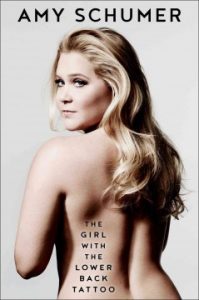 The Girl with the Lower Back Tattoo: As Emmy Award-winning comic, television and film star Amy Schumer’s star continues to rise, she proves, once again, that she isn’t about to back down, or allow public notoriety to make her into anything but her authentic self. In this memoir, Schumer mines her own past for stories about how she became the person she is today, from the hilarious to the heartbreaking, from the deeply…extremely…sometimes uncomfortably personal to the universal. Schumer’s sense of humor shines through this book, but she also shows how big-hearted, and extraordinarily brave she is with this candid and very frank book that will introduce you–or re-acquaint you–with one remarkable woman. The Washington Post wrote, “‘Schumer is a talented storyteller. She’s known for standing in a spotlight and sharing every corner of her soul with thousands of strangers. So it’s no surprise that her book is packed with hilarious, honest and often vulnerably raw details of her life… Readers will laugh and cry, and may put the book down from moments of honesty that result in uncomfortable realistic details from her life.”
The Girl with the Lower Back Tattoo: As Emmy Award-winning comic, television and film star Amy Schumer’s star continues to rise, she proves, once again, that she isn’t about to back down, or allow public notoriety to make her into anything but her authentic self. In this memoir, Schumer mines her own past for stories about how she became the person she is today, from the hilarious to the heartbreaking, from the deeply…extremely…sometimes uncomfortably personal to the universal. Schumer’s sense of humor shines through this book, but she also shows how big-hearted, and extraordinarily brave she is with this candid and very frank book that will introduce you–or re-acquaint you–with one remarkable woman. The Washington Post wrote, “‘Schumer is a talented storyteller. She’s known for standing in a spotlight and sharing every corner of her soul with thousands of strangers. So it’s no surprise that her book is packed with hilarious, honest and often vulnerably raw details of her life… Readers will laugh and cry, and may put the book down from moments of honesty that result in uncomfortable realistic details from her life.”
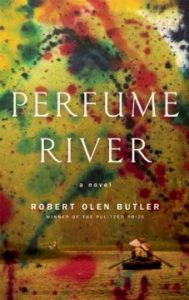 Perfume River: Another historical novel, this one partially set during the the Vietnam War, this newest release from Robert Olen Butler explores both the personal lives of one family and the turmoil of a generation at war. Professor Robert Quinlan and his wife, Darla. now in their seventies, met while working in anti-war protests, and married with the hope of changing the world for good, and for ever. Now, the fissures in their own relationships are becoming more and more apparent, especially as Robert’s relationship with the rest of his family–including his brother and father, a veteran of the Second World War–crumbles around him. When a homeless man comes into Robert’s life, he assumes at first that he is just another Vietnam veteran looking for assistance, but the longer he remains, the more he realizes that this man’s impact on his family will be greater than Robert could ever imagine. A deeply thoughtful, quietly tragic, and deeply moving work, critics are hailing this as another of Butler’s masterpieces, with Booklist declaring it “A deeply meditative reflection on aging and love, as seen through the prism of one family quietly torn asunder by the lingering effects of the Vietnam War. Butler…shows again that he is a master of tone, mood, and character, whatever genre he chooses to explore. This is thoughtful, introspective fiction of the highest caliber, but it carries a definite edge, thanks to an insistent backbeat that generates suspense with the subtlest of brushstrokes.”
Perfume River: Another historical novel, this one partially set during the the Vietnam War, this newest release from Robert Olen Butler explores both the personal lives of one family and the turmoil of a generation at war. Professor Robert Quinlan and his wife, Darla. now in their seventies, met while working in anti-war protests, and married with the hope of changing the world for good, and for ever. Now, the fissures in their own relationships are becoming more and more apparent, especially as Robert’s relationship with the rest of his family–including his brother and father, a veteran of the Second World War–crumbles around him. When a homeless man comes into Robert’s life, he assumes at first that he is just another Vietnam veteran looking for assistance, but the longer he remains, the more he realizes that this man’s impact on his family will be greater than Robert could ever imagine. A deeply thoughtful, quietly tragic, and deeply moving work, critics are hailing this as another of Butler’s masterpieces, with Booklist declaring it “A deeply meditative reflection on aging and love, as seen through the prism of one family quietly torn asunder by the lingering effects of the Vietnam War. Butler…shows again that he is a master of tone, mood, and character, whatever genre he chooses to explore. This is thoughtful, introspective fiction of the highest caliber, but it carries a definite edge, thanks to an insistent backbeat that generates suspense with the subtlest of brushstrokes.”


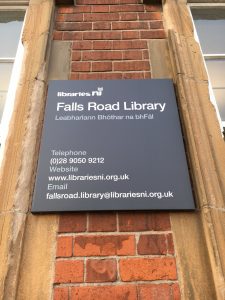 Originally, the area that became the Falls Road was a petty kindgom known in Irish as Túath na bhFál, or Territory of the Enclosures. It was incorporated into Belfast by the British government in the 19th century, and today, the Falls Road is very much a working-class area of Belfast. Since the late 1960’s, has been a bedrock of Socialist and Irish Nationalist politics. The worldwide Civil Rights movement united Northern Irish Catholics into a political group that rallied for better housing and voting rights (it’s a complicated system, but essentially, business owners had more say in elections, and the economy was structured to favor Protestant business owners). This prompted Protestants in power to fear a Catholic uprising that would unite Northern Ireland and the Republic of Ireland, and resulting in a backlash against protestors that, to many, seemed very excessive. The result was what has become known as The Troubles in Northern Ireland, and, in many ways, the Falls Road was at the center of the conflict.
Originally, the area that became the Falls Road was a petty kindgom known in Irish as Túath na bhFál, or Territory of the Enclosures. It was incorporated into Belfast by the British government in the 19th century, and today, the Falls Road is very much a working-class area of Belfast. Since the late 1960’s, has been a bedrock of Socialist and Irish Nationalist politics. The worldwide Civil Rights movement united Northern Irish Catholics into a political group that rallied for better housing and voting rights (it’s a complicated system, but essentially, business owners had more say in elections, and the economy was structured to favor Protestant business owners). This prompted Protestants in power to fear a Catholic uprising that would unite Northern Ireland and the Republic of Ireland, and resulting in a backlash against protestors that, to many, seemed very excessive. The result was what has become known as The Troubles in Northern Ireland, and, in many ways, the Falls Road was at the center of the conflict.
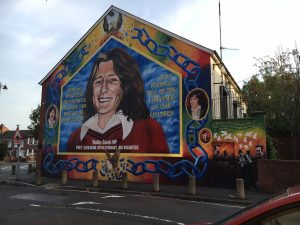

 Shattering Silence
Shattering Silence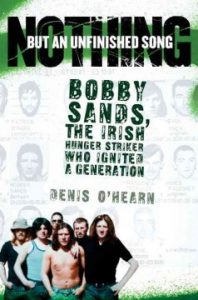 Nothing But an Unfinished Song : Bobby Sands, the Irish Hunger Striker who Ignited a Generation
Nothing But an Unfinished Song : Bobby Sands, the Irish Hunger Striker who Ignited a Generation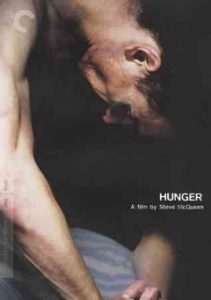 Hunger
Hunger

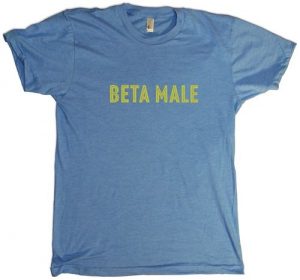 This also means that Beta Heroes have a lot more room to grow. Whereas most Alpha Heroes have little choice but to double-down on their dominant tendencies when challenged (although a select few don’t), Beta heroes have room to grow, to assume Alpha tendencies when challenged, or to become something else entirely–and that choice is uniquely theirs. This often allows Beta Heroes to have a unique story-arc within a story that is as fascinating as the heroine’s journey, rather than forcing him to be a fixed point within a plot.
This also means that Beta Heroes have a lot more room to grow. Whereas most Alpha Heroes have little choice but to double-down on their dominant tendencies when challenged (although a select few don’t), Beta heroes have room to grow, to assume Alpha tendencies when challenged, or to become something else entirely–and that choice is uniquely theirs. This often allows Beta Heroes to have a unique story-arc within a story that is as fascinating as the heroine’s journey, rather than forcing him to be a fixed point within a plot.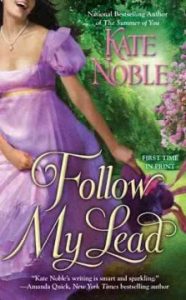 Jason, from
Jason, from 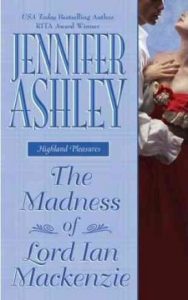 Ian MacKenzie, from
Ian MacKenzie, from 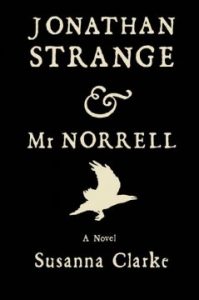 Jonathan Strange, from
Jonathan Strange, from 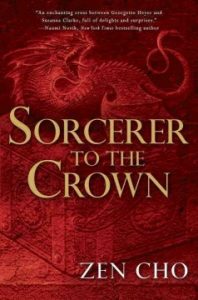 Zacharias Wythe, from
Zacharias Wythe, from 


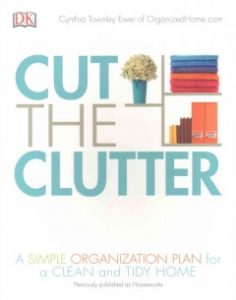

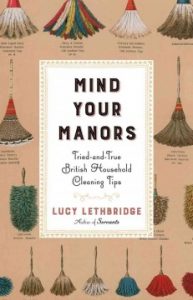
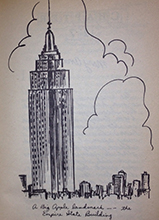
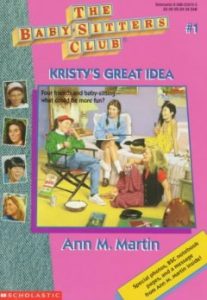 The Baby-Sitters’ Club
The Baby-Sitters’ Club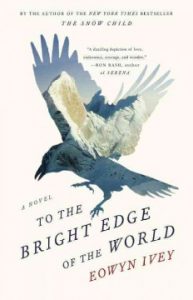 To the Bright Edge of the World:
To the Bright Edge of the World: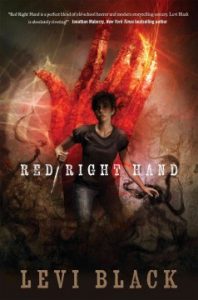 Red Right Hand
Red Right Hand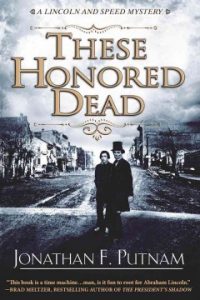 These Honored Dead
These Honored Dead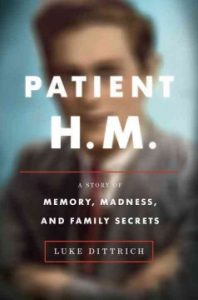 Patient H.M.: A Story of Memory, Madness, and Family Secrets
Patient H.M.: A Story of Memory, Madness, and Family Secrets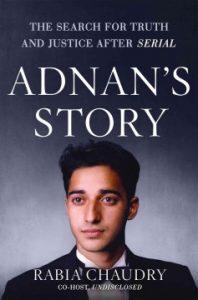 Adnan’s Story
Adnan’s Story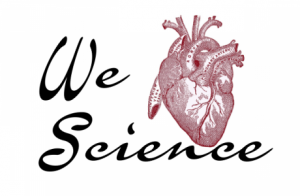 As high school and college students around the country start to think about hitting the stores to get the items they need before they head back to school, the staff at the library are preparing to say our annual, fond farewell to our summer interns. From running the Summer Food Program to bringing extra energy to the Creativity Lab to staffing our circulation desks, this year the library has had a dozen or so interns join us for the summer. Every year, we try as hard as possible to exploit… excuse me… I mean leverage our interns’ considerable talents to make the library an ever-more exciting destination.
As high school and college students around the country start to think about hitting the stores to get the items they need before they head back to school, the staff at the library are preparing to say our annual, fond farewell to our summer interns. From running the Summer Food Program to bringing extra energy to the Creativity Lab to staffing our circulation desks, this year the library has had a dozen or so interns join us for the summer. Every year, we try as hard as possible to exploit… excuse me… I mean leverage our interns’ considerable talents to make the library an ever-more exciting destination.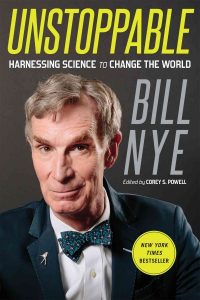 Unstoppable: harnessing science to change the world
Unstoppable: harnessing science to change the world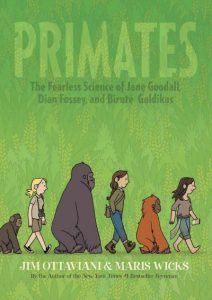 When I was in upper elementary and middle school one of my favorite annual assignments was to read a biography and do a project on a scientist. My favorite scientist was (and is) Rachel Carson. But the women in the graphic biography
When I was in upper elementary and middle school one of my favorite annual assignments was to read a biography and do a project on a scientist. My favorite scientist was (and is) Rachel Carson. But the women in the graphic biography 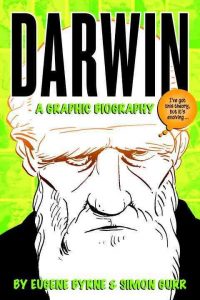 And if you enjoy Primates, you’ll also want to get your hands on a copy of another graphic biography:
And if you enjoy Primates, you’ll also want to get your hands on a copy of another graphic biography: 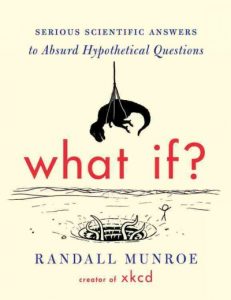 What if? serious scientific answers to absurd hypothetical questions
What if? serious scientific answers to absurd hypothetical questions If you like your science mixed with a bit of self-help, you may want to try
If you like your science mixed with a bit of self-help, you may want to try 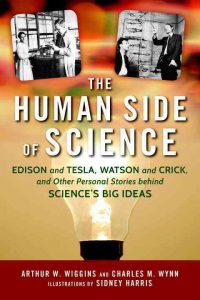 I don’t know about you, but I love a good anecdote. I enjoy a glimpse into the personal lives of the brilliant and accomplished. Which leads me to believe that I would enjoy reading
I don’t know about you, but I love a good anecdote. I enjoy a glimpse into the personal lives of the brilliant and accomplished. Which leads me to believe that I would enjoy reading 